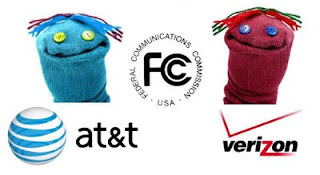Cell phone coverage maps are generated through a combination of methods that involve data collection, signal propagation modeling, and analysis. Here's a general overview of the process:
Data Collection: Cell phone network operators collect extensive data on signal strength, quality, and other network parameters from their network infrastructure. This data includes information from cell towers, base stations, and user devices.
Drive Tests: Network operators and third-party companies conduct drive tests where they equip vehicles with specialized equipment that measures signal strength, call quality, data speed, and other metrics while driving through different areas. These tests help gather data on the actual performance of the network in various locations.
Crowd-Sourced Data: Companies and organizations may also collect data from users' devices through dedicated apps or voluntary participation. This method helps gather real-time information about network performance and coverage as experienced by users in different locations.
Signal Propagation Modeling: Once the data is collected, it is processed and combined with geographic information system (GIS) data, including terrain, building structures, vegetation, and other relevant factors. Signal propagation models are then used to estimate how the signals propagate and interact with the environment.
Coverage Prediction: Using the collected data and the signal propagation models, network operators can predict the coverage areas and signal strengths for their networks. This information is often presented as coverage maps that show the expected signal strength and coverage quality in different geographic regions.
Verification and Fine-Tuning: The predicted coverage maps are compared and validated against real-world data, including drive tests and other measurements. This process helps identify discrepancies, optimize the models, and improve the accuracy of the coverage maps.
Displaying Coverage Maps: The generated coverage maps are then made available to the public through various means, such as network operators' websites, coverage map applications, or government regulatory authorities websites.
Coverage maps are estimations based on various factors, and actual network performance can still vary due to dynamic conditions, such as changes in network load, weather, and physical obstructions.
Are coverage maps accurate?
The FCC did an investigation that revealed false data submission by the wireless carriers. The Federal Communications Commission (FCC) established the Mobility Fund Phase II (MF-II) to allocate up to $4.53 billion in Universal Service Fund support over a decade to primarily rural areas lacking unsubsidized 4G LTE wireless service. The MF-II program plays a vital role in supporting mobile voice and broadband coverage, promoting the deployment of mobile wireless service through a reverse auction, and ensuring the advancement of 4G LTE service in underserved regions.
Challenge Process and Data Submission:
Under the MF-II Challenge Process Order, mobile providers were required to submit standardized coverage data for qualified 4G LTE service. This data, along with subsidy information from the Universal Service Administrative Company (USAC), was used to establish the map of areas presumptively eligible for MF-II support (initial eligible areas map). Interested parties were given the opportunity to challenge the initial determination of an area's eligibility, and providers had the chance to respond to these challenges.
Investigation and Testing:
In December 2018, in response to various concerns, the FCC initiated an investigation into whether one or more major mobile providers had violated the requirement to submit coverage maps to the Commission. The investigation was led by the Rural Broadband Auctions Task Force, in coordination with the FCC's Office of Economics and Analytics, Enforcement Bureau, Wireless Telecommunications Bureau, Wireline Competition Bureau, and the Office of Engineering and Technology.
To assess the accuracy of the coverage maps, FCC Enforcement Bureau field agents conducted speed tests on the Verizon, U.S. Cellular, and T-Mobile networks. These agents performed on-the-ground network performance measurements across six drive test routes in 12 states, covering nearly 10,000 miles and conducting a total of 24,649 tests. Additionally, 5,916 stationary speed tests were conducted at 42 distinct locations in nine states. The speed test data from FCC staff tests, carrier submissions, and challenges raised by individuals and communities were analyzed.
Findings and Consequences:
Upon analyzing the collected data, FCC staff discovered that the coverage maps submitted by Verizon, U.S. Cellular, and T-Mobile often overstated the actual coverage and failed to reflect the on-the-ground performance in many cases. Merely 62.3% of staff drive tests achieved the minimum download speed predicted by the coverage maps, with U.S. Cellular achieving this speed in only 45.0% of tests, T-Mobile in 63.2% of tests, and Verizon in 64.3% of tests. Similarly, the staff's stationary tests revealed that each provider achieved sufficient download speeds in fewer than half of all test locations.
Furthermore, the FCC staff encountered significant gaps in network coverage, with no 4G LTE signal available for 38% of drive tests on U.S. Cellular's network, 21.3% of drive tests on T-Mobile's network, and 16.2% of drive tests on Verizon's network, despite the providers reporting coverage in those areas.
Consequences for Providers:
Given the FCC's emphasis on the accurate submission of coverage maps, Verizon, U.S. Cellular, and T-Mobile now face substantial fines for submitting false data. The FCC staff underscores the legal responsibility of mobile providers to provide accurate and reliable information to the Commission. It is essential for providers to diligently model and test their networks, continuously improving the accuracy of their projections to ensure that policymakers and the public can confidently rely on their submissions.







